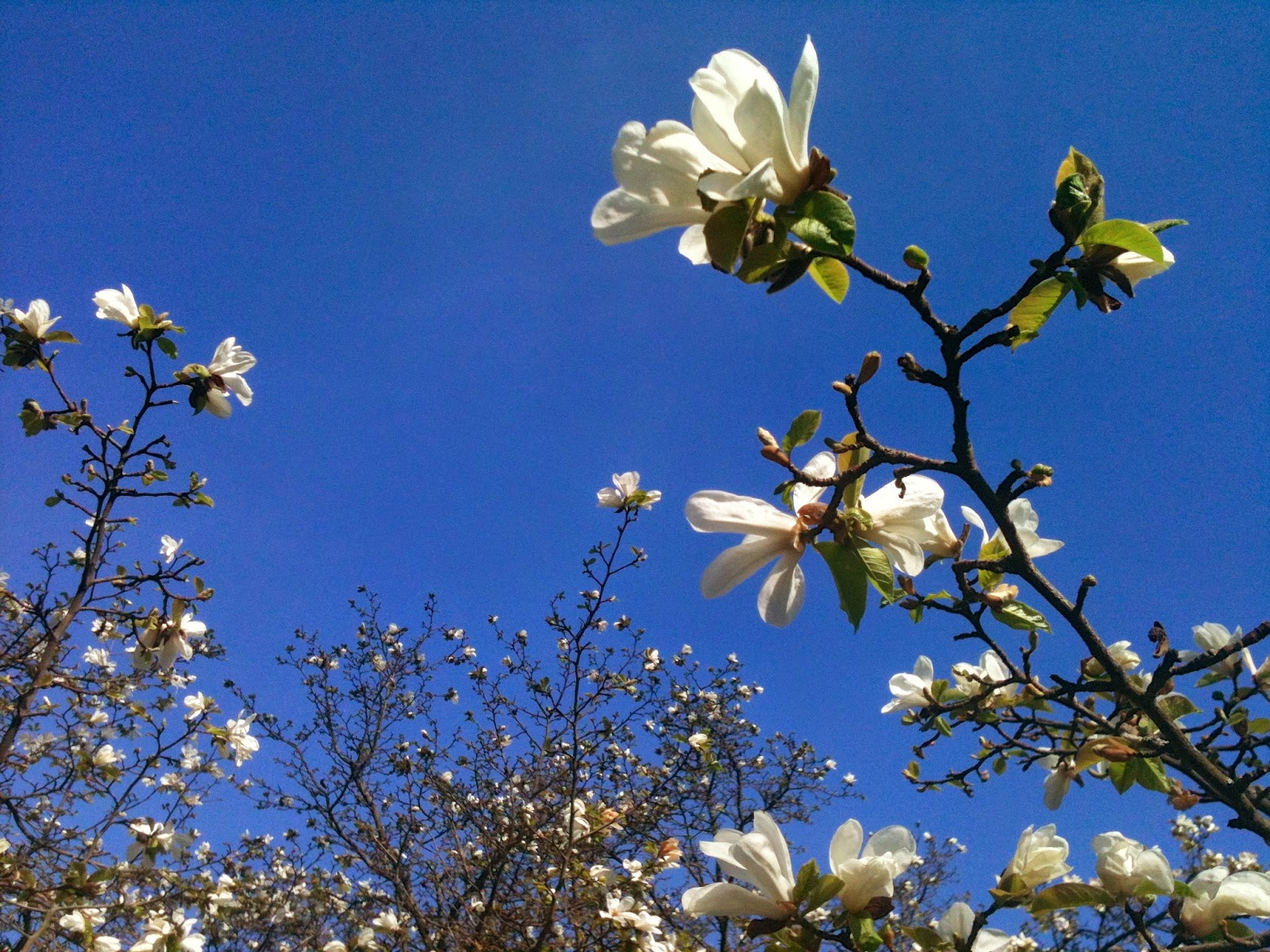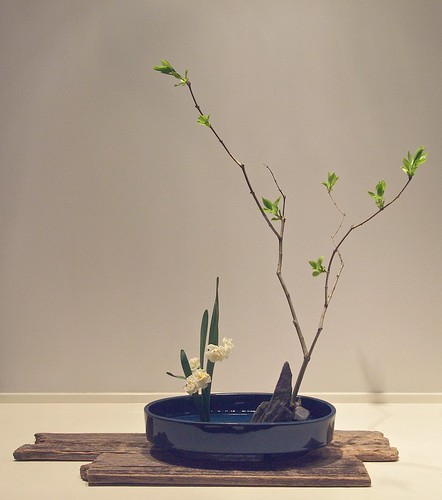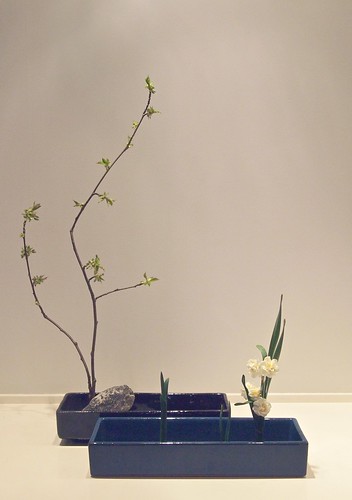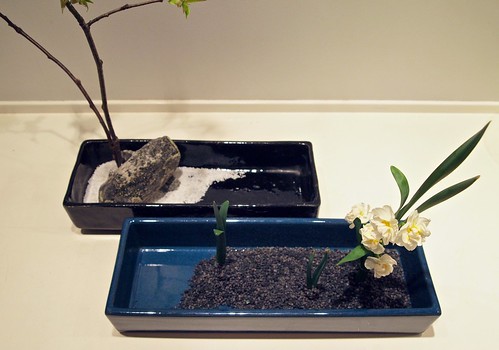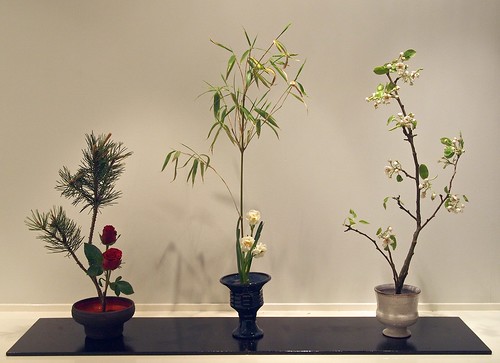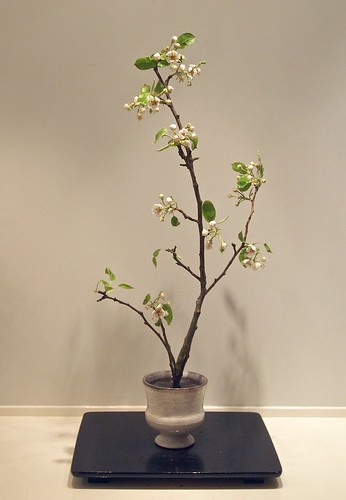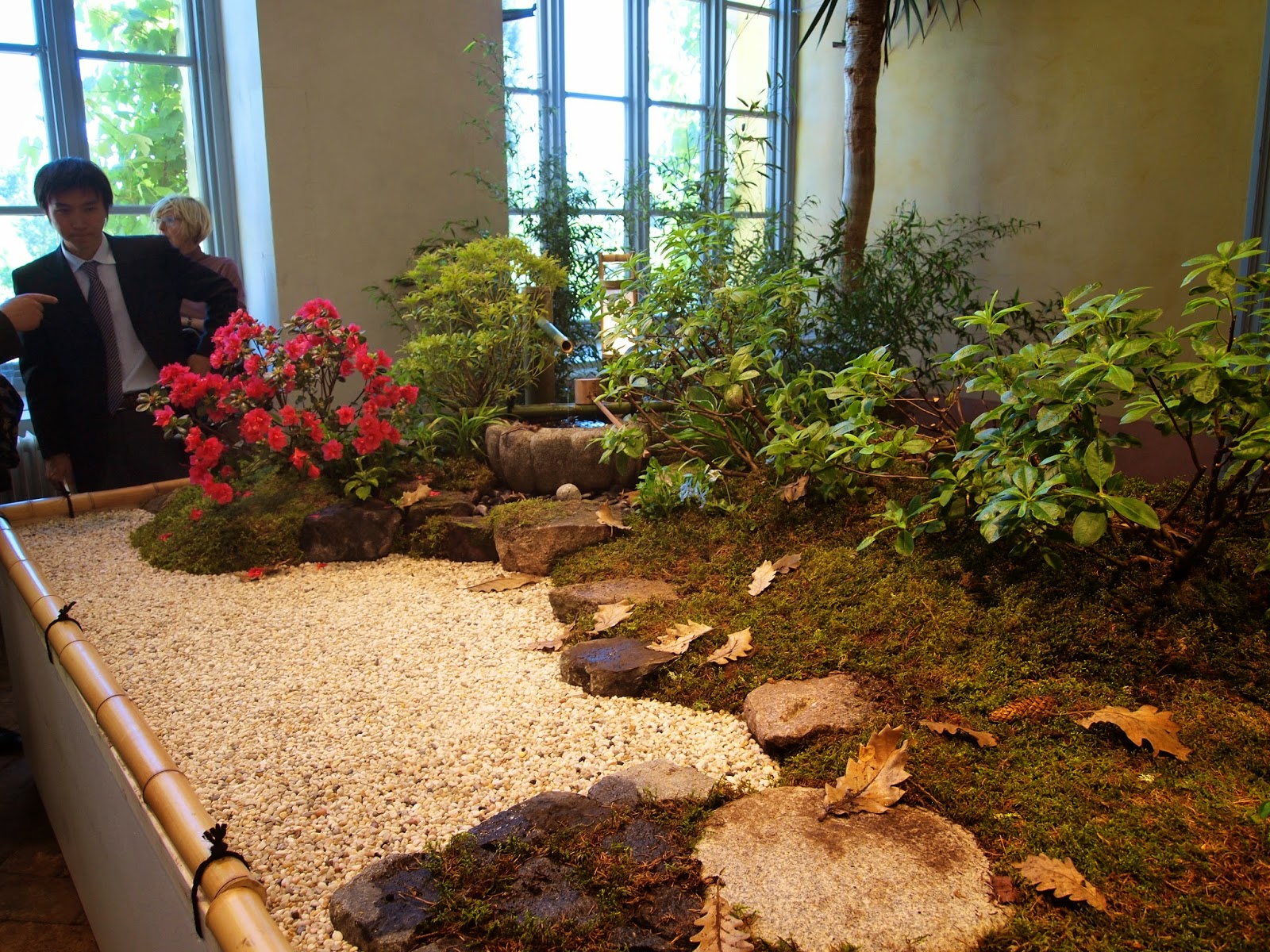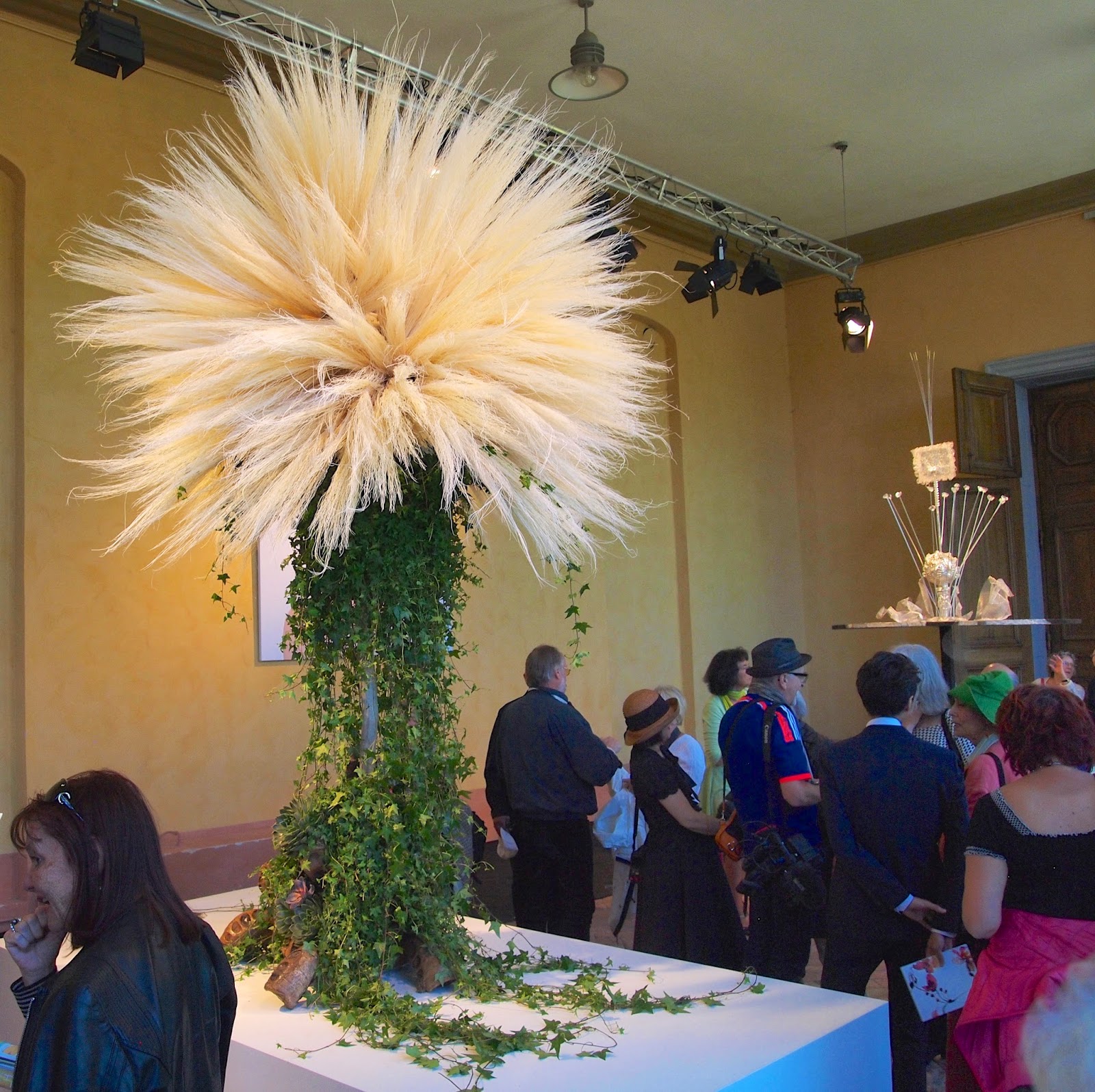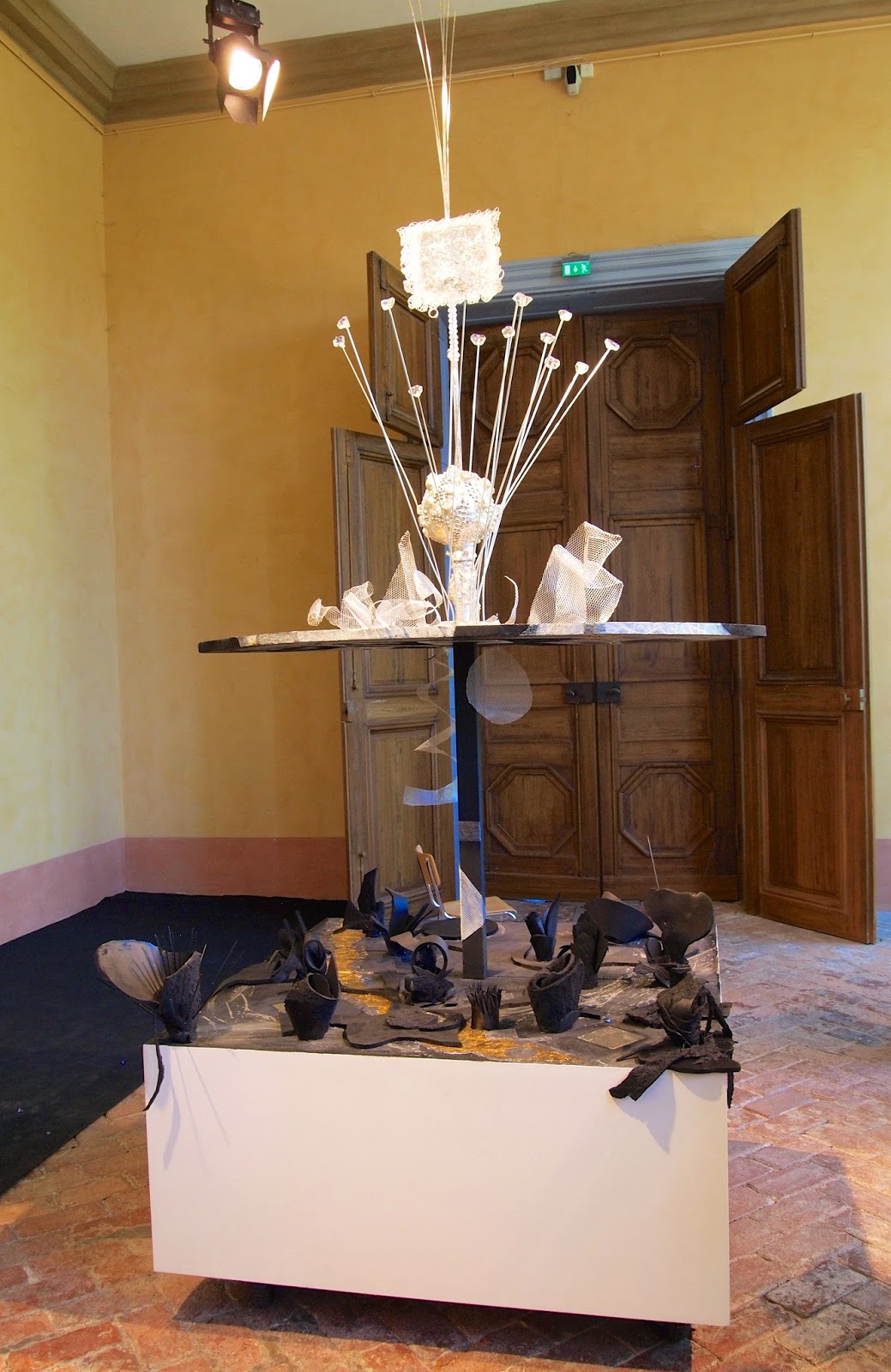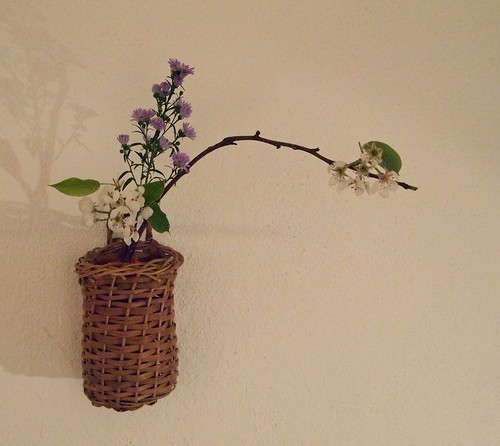The use of bamboo vases in ikebana goes back to the tea masters of the 16th century. Using natural bamboo, so to say from the backyard, was a reaction to the lavish and overloaded esthetics of the palaces inspired by fashionable Chinese culture.
![]() |
| Sen no Rikyu (1522-1591) |
Flower containers used in tea ceremonies are called hana-ire (flower holder). A hanaire made from bamboo is a take no tsutsu or take no hanaire. The earliest vases were either elongated tubes of bamboo with flowers put into the upper end (the tubes were usually too tall to stand on the floor), or tubes with a nicely shaped window cut out in one side of the vase to place the flowers through. Towards the end of the century the types of vases in use today were introduced.
![]() |
"Onjoji" Ichiju-giri vase
artributed to Rikyu
Tokyo National Museum |
It had been an uneventful day in
the year 1590. Warlord Hideyoshi and his massive army are surrounding
Odawara castle in an attempt to eliminate the rivaling
Hōjō clan.
The siege lasted for three months and has been called "the most unconventional siege lines in samurai history." To keep their spirits up the samurai were entertained by everything from concubines, prostitutes and musicians to acrobats, fire-eaters, and jugglers. In the camp was also the famous tea master
Rikyū. Eight years earlier he had become a tea master for Hideyoshi. He was now in Hideyoshi's circle of confidants, and the most influential figure in the world of
chanoyu. This particular evening Rikyū hosted a night tea gathering. While the participants waited for news from the front, instead of the
kaiseki meal usually served at this kind of gathering, Rikyū introduced a flower-arranging competition with Hideyoshi as judge.
The story of this unusual competition is also a story about the use of bamboo vases in ikebana. For the occasion Rikyū had improvised prototypes for three new kinds of vases made from bamboo, that are still in use today. In contrast with earlier types with carefully carved delicate openings, Rikyū's vases had openings made by sawing and knocking out pieces of the walls.
![]() |
"Ikkyoku" Shakuhachi-giri vase
attributed to Rikyu
Tokyo National Museum |
The three types of vases were an ichijū-giri, a vase with one opening on the side, to be hanging on the wall and displaying flowers that grow above eye-level, a tube shaped shakuhachi-giri, standing on the floor with flowers that bloom below eye-level (One source that I found describes it as a simple bamboo tube used upside-down, with one node and a slight undulation, which has a surface effect called "sesame seed."), and a nijū-giri with two levels, that was used to hold the bunches of flowers and branches waiting to be arranged. It's also been said that Hideyoshi was asked to arrange the branches in the upper level of this vase.
![]() |
| Woodblock print, Samurai with ikebana |
Rikyū died the year after the siege of Odawara. The three vases became classics and according to tradition they have all survived history and are still to be seen. The ichijū-giri, later known as
Onjōji, and a shakuhachi-giri named
Ikkyoku is in
Tokyo National Museum. A shakuhachi-giri named
Shaku-hachi is supposedly in the collection of the
Urasenke Sen family. The nijū-giri named
Yonaga can be seen in the
Fujita Museum in Osaka.
The information in this blog post is gathered from the following sources:
Wikipedia










